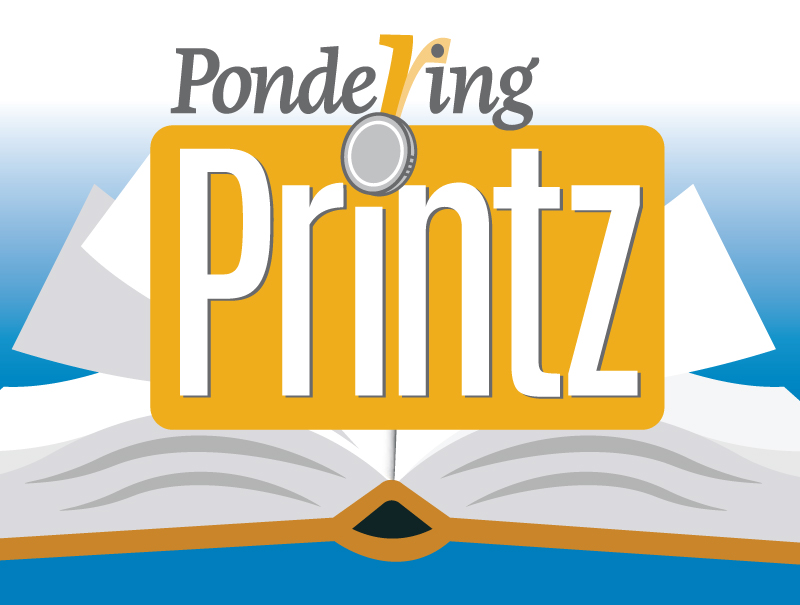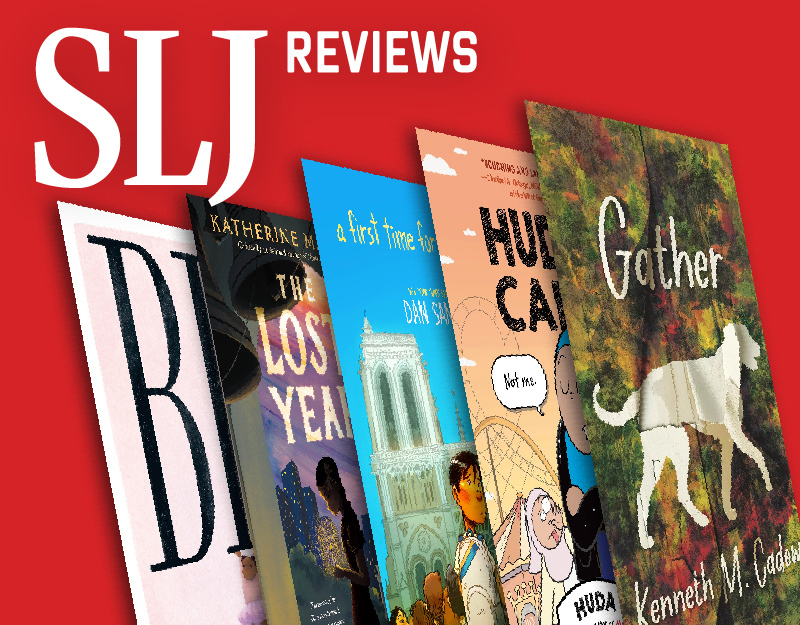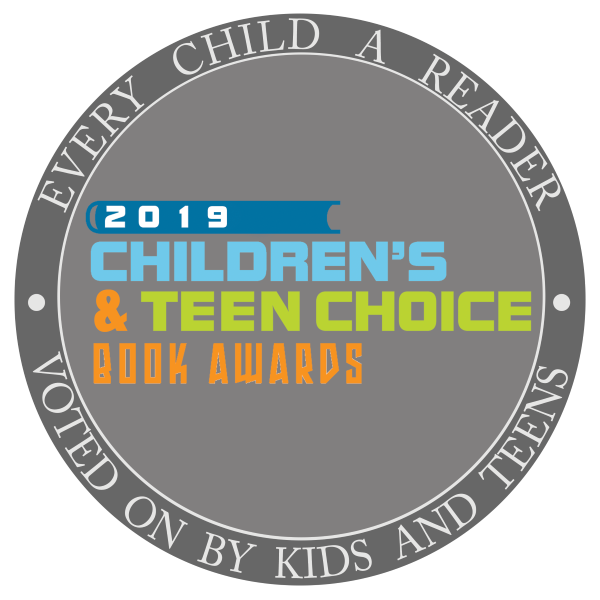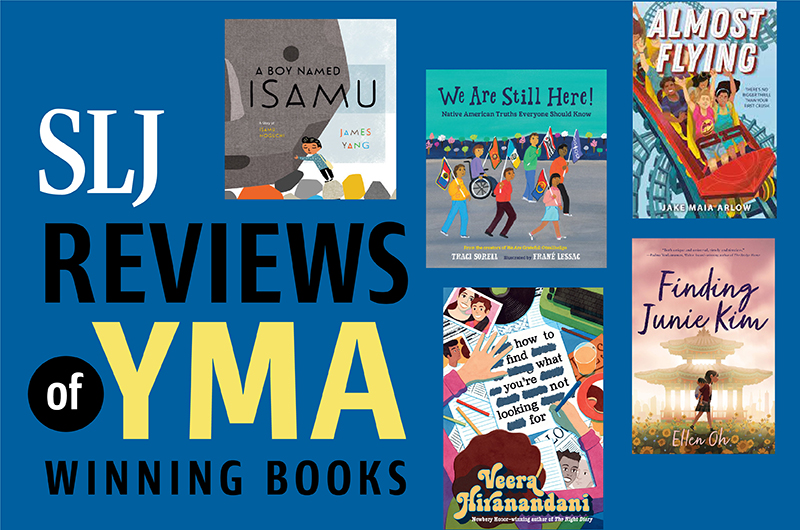Roller Girl
 ROLLER GIRL is not a flashy book in Newbery terms, and that is part of its charm. Stripped down just to its bare text, sentence by sentence, it wouldn’t wow me. But ROLLER GIRL is a great example of a story presented in exactly the right format. From the pre-title/title page/post-title page drama in which the only sound our protagonist actually emits is “*SIGH*”, to the emotional tension and rhythm on p. 46 by dropping a single sentence back and forth down the course of four identical panels, to the triple-narrative panels as the one on the bottom for page 43, in which we have the protagonists past-tense narrative, present tense dialogue, and sub-conscious thought bubble, simultaneously….Jamieson lays out her narrative to get the most humor and the most emotional impact out of each spread.
ROLLER GIRL is not a flashy book in Newbery terms, and that is part of its charm. Stripped down just to its bare text, sentence by sentence, it wouldn’t wow me. But ROLLER GIRL is a great example of a story presented in exactly the right format. From the pre-title/title page/post-title page drama in which the only sound our protagonist actually emits is “*SIGH*”, to the emotional tension and rhythm on p. 46 by dropping a single sentence back and forth down the course of four identical panels, to the triple-narrative panels as the one on the bottom for page 43, in which we have the protagonists past-tense narrative, present tense dialogue, and sub-conscious thought bubble, simultaneously….Jamieson lays out her narrative to get the most humor and the most emotional impact out of each spread.
I’ve started thinking of this story as “GOODBYE STRANGER” meets “THE THING ABOUT LUCK”. It is another story about how girls treat each other at that terrible age … though this one just a tad younger (and easier for me to bear) than Stead’s. Astrid’s relentless capacity to be a little too self-focussed is portrayed with so much humor…humor heightened by the fact that she’s telling her story back to us, and she is a ham. As with the combine-detail-fixation in THE THING ABOUT LUCK, Jamieson delivers enough details about Roller Derby rules and strategy for the reader to become fully invested in Astrid’s obsession.
ADVERTISEMENT
ADVERTISEMENT
If I had to guess which book would make me cry this year, I would never have guessed. But the wordless last panels on page 217 here did it to me; Astrid’s accomplishment so transformative and so mundane at the same time that I believed it fully. There’s no text in that transaction to point to, but it would never have worked without the entire support of story, delivered both in text, picture, and panel, that came before.
Filed under: Uncategorized
About Nina Lindsay
Nina Lindsay is the Children's Services Coordinator at the Oakland Public Library, CA. She chaired the 2008 Newbery Committee, and served on the 2004 and 1998 committees. You can reach her at ninalindsay@gmail.com
ADVERTISEMENT
ADVERTISEMENT
SLJ Blog Network
The Moral Dilemma of THE MONSTER AT THE END OF THIS BOOK
Cover Reveal and Q&A: The One and Only Googoosh with Azadeh Westergaard
Winnie-The-Pooh | Review
Parsing Religion in Public Schools
ADVERTISEMENT








I adore this book. I suspect it will not be considered “distinguished” (whatever that word means) but I think it’s super-accomplished…and perhaps more importantly, every kid I have ever given it to loves it, even kids who do not like to read. So YOU GO VICTORIA JAMIESON, COME WHAT MAY.
I haven’t reread this one yet, but I’ll circle back once I do. I will say that this one represents an entirely different approach from DROWNED CITY. The majority of that text is description; here it’s dialogue.
I am far from objective about this book as it’s written by my friend and fellow Portlander. (It’s been a good year for graphic novelists from my home town. Barry Deutsch just got a starred review from the Horn Book for his latest Hereville book and Matt Holm got several stars for his collaboration with Jenni Holm on Sunny Side Up.)
I find it very difficult to evaluate the text separate from the pictures in graphic novel format, so it’s hard to say where this book would stand under the Newbery criteria. I did find it a fun and accessible read with surprising depth about girls’ friendships. And it’s been a strong seller at the bookshop where there are slim pickings for girl athletes.
As someone who had already created her Roller Derby name, (Spinebinder Sue), I was beyond thrilled when this book appeared last Spring. In presentation, character, and setting RG brings it.
It doesn’t rise above my top contenders, but then I’m not sure I’m not coming from a ‘text-privileged’ type of mindset.
I’ve been waiting to read this book for a long time and just received the ebook from my public library. After being introduced to roller derby myself for the first time last winter, I was anxious to see how Jameson would present it to a middle grade audience. In short: I loved this novel. I gobbled it down in a day and couldn’t stop telling both my sixth grade students and adult friends about it.
What really struck me about this text was the strength of Astrid’s voice. Jameson clearly captures the highs and lows of middle school life through Astrid’s hyperbole-laden narration. Her superb illustrations only add to this. There were many moments in this book that caused me to feel pure glee as a reader. Astrid’s take on shopping was one particular moment. I also appreciated how accessible Jameson made the sport of roller derby to younger readers who may not have a lot of background knowledge on the topic.
One struggle I often have with books that are “Newbery contenders” is that my students have a hard time relating to them. Yet, I can see my students easily connecting to Astrid as a character. They too are facing her struggles of friendship and self-identity. I like that Jameson doesn’t shy away from the difficulty of navigating middle school life, yet she makes it very accessible with the perfect dose of humor. I mean haven’t we all felt “nersick” like Astrid on page 190?
Is Roller Girl the most distinguished book I’ve read this year? No. But is it a book that I know will constantly be checked out of my classroom library, engage even my most reluctant readers, and leave my students with a positive message? Yes. And for those reasons it’s one of my favorite books this year.